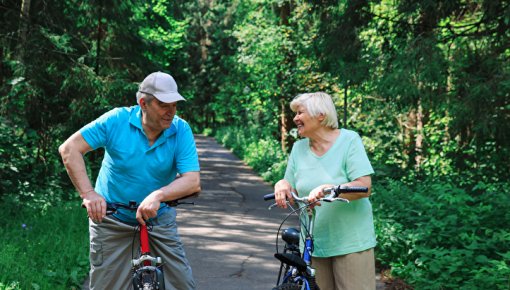I thought I had twisted my knee
Then I had my hips replaced. About three years later, I started to notice that my knee was hurting more and more often. At first I thought I might have twisted my knee or overdone it with the cycling. I used a cream and didn’t go to see the doctor at the time.
But the pain got worse and worse, so eventually I did go to the doctor. He examined my knee and did an x-ray. The result was that my knee was totally damaged due to wear and tear. There was no cartilage left.
We started with conservative treatment, physical therapy and exercises at home. I did that for about three quarters of a year. But it didn’t get better. My knee kept buckling out of the blue and I often almost fell.

